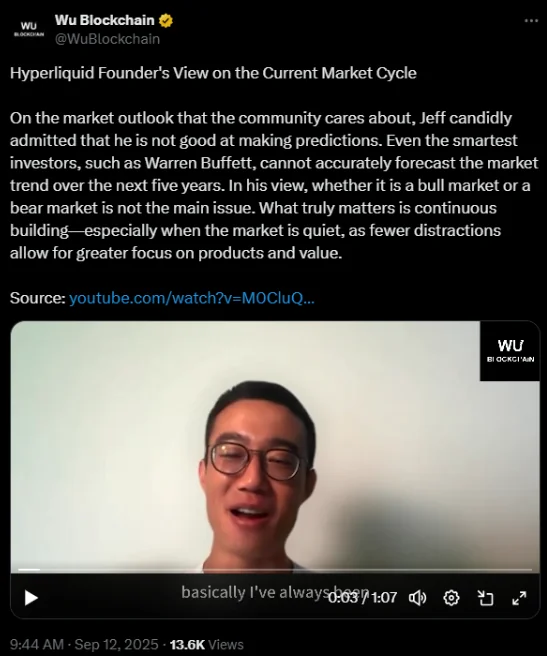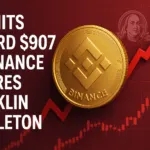Key Insights
- Hyperliquid CEO Jeff Yan says the exchange never made deals with market makers.
- Yan stresses the importance of independence and community-driven growth
- The platform, which was built by 11 people, now dominates decentralized perpetual trading
Hyperliquid CEO Jeff Yan has firmly denied that the decentralized exchange ever partnered with market makers during its early days.
Yan spoke on the WuBlockchain Podcast hosted by reporter Colin Wu, and argued that market maker deals give an illusion of liquidity. However, they ultimately weaken independence.
He described such practices as “centralizing” and said avoiding them was a deliberate choice.
Integrity Over Short-Term Growth
According to Yan, rejecting market maker partnerships may have slowed Hyperliquid’s early progress. However, the decision helped to maintain integrity.
“I’m not very political, I just want to build, but I think these founding values resonate with me.” he said.
He pointed out that community trust is important for a decentralized exchange. He also argued that copying centralized models would have created long-term risks.

He added that Hyperliquid was built without outside capital and relied solely on his own resources. Yan said money was never the primary goal.
Instead, the focus was on curiosity and creating something meaningful for the general financial space.
Hyperliquid’s rise as a self-funded project
Yan, is a Harvard math and computer science graduate who worked at Hudson River Trading before entering crypto.
After FTX collapsed in 2022, he and his team saw an opportunity to build a decentralized platform that combined security with a user-friendly experience. That vision became Hyperliquid.
Unlike many crypto startups, Hyperliquid never raised funds from venture capital or investors. Yan said the common approach of raising rounds from investors felt “fake” because it focused more on valuation than actual progress.
For him, real growth comes when users find genuine value in the product.
“Users should benefit from the upside, not just investors,” he said, explaining why Hyperliquid kept ownership community-driven.
Despite having only 11 team members, Hyperliquid now handles more than 75% of decentralized perpetual market share.
User assets on the platform reach around 6.2 billion dollars, while its token holds a market value near 16 billion dollars. This means that it ranks 13th globally, and Ssome in the community even call it the “next Binance.”
“A lot of it is hard work,” Yan said “a lot of it is the community rallying behind an important idea at the right time, and a lot of it is also just luck.”
Why Hyperliquid avoided centralized exchange listings
Another decision was to keep Hyperliquid’s token off major centralized exchanges like Binance or Coinbase. Yan explained that the team preferred to focus on building technology rather than chasing listings.
Without a dedicated business development arm, the 11-person team concentrated on performance and community features.
Yan said they were open to centralized exchanges listing the token, but it was not a priority. Instead, they wanted users to engage directly with Hyperliquid’s blockchain.
This choice reinforced the project’s principle of independence and decentralized control. Yan believes it also encouraged dedicated users to join the platform directly, rather than rely on intermediaries.
Hyperliquid’s roadmap and future role in decentralized finance
Yan shared that Hyperliquid does not follow strict milestone planning. Instead, the team focuses on building features as needed and adapting to changing conditions in finance and crypto.
Current priorities include implementing HIP-3, expanding spot and perpetual trading options and improving system performance.
Yan said Hyperliquid has shifted from being just an exchange to a protocol that others can build on. This means third-party developers can create their own applications, stablecoins, or tokenized assets on top of Hyperliquid’s blockchain.
He stressed that Hyperliquid itself does not aim to dominate every financial service. Instead, its role is to provide a scalable foundation where different teams can innovate and compete.

Ekaterina Sokolova is known for her dynamic coverage of cryptocurrency markets and blockchain advancements. Her articles, featured in several prominent digital outlets, combine thorough research with a clear presentation style that demystifies complex technological trends for her readers.





